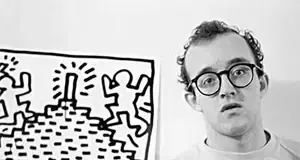Curing Cancer One Masterpiece at a Time!™
The Art of Negotiation: How To Buy Art Like A Pro
The art of negotiation is a crucial skill for any art collector. Whether you're buying contemporary art from a gallery, negotiating with an emerging artist, or making a counteroffer at an art fair, effective negotiation can help you secure the best pieces at the best prices. In this guide, we'll explore the essential negotiation skills and tactics to help you navigate the art world like a pro. We'll also share real-life examples of successful art negotiations to provide practical context and make the guide more relatable.
Negotiation skills are not just a tool in the art world, but a powerful asset in various aspects of life. They empower you to achieve win-win outcomes with business owners, from galleries to emerging artists, to build strong relationships and ensure mutual satisfaction with agreements. Mastering negotiation can give you the upper hand, instilling a sense of confidence and capability in achieving your desired outcomes.
How to Negotiate Buying Art
Before entering any negotiation, gather as much information as possible. Understand the artist’s work, the art market value, and how much galleries are valuing similar works. Use platforms like LinkedIn and social media to follow the artist’s career and market trends.
Building rapport with the artist or gallery owner can significantly impact the negotiation process. Engage in conversations, show genuine interest in the artist’s work, and establish a connection. This will make the negotiation feel less transactional and more collaborative.
Making the first offer can set the tone for the negotiation. Ensure your offer is realistic but leaves room for negotiation. Be prepared for a counteroffer and maintain flexibility. What do you want? Keep what you want in mind as you negotiate.
Practice active listening during negotiations. This means fully focusing on and understanding the seller’s perspective, needs, and constraints. It's not just about hearing their words, but also about understanding their underlying interests and concerns. This helps in finding a middle ground that satisfies both parties. Sometimes paying full price may make sense. Listen carefully and remain flexible.
Here are a few effective negotiation tactics we recommend:
- Anchor the Negotiation: Start with a high but reasonable offer to set the negotiation’s anchor point.
- Counteroffers: Be ready to make counteroffers. Each counteroffer should move incrementally towards your target price.
- Bundling: If you’re interested in multiple pieces, negotiate a bundle price for a better deal.
A successful negotiation should leave both parties feeling satisfied. We don’t recommend zero-sum negotiations where you win by the other party’s losing. Instead, aim for a win-win outcome by understanding and addressing the seller’s needs while securing a fair price for yourself. This approach emphasizes the importance of building relationships and finding mutually beneficial solutions, making you feel more connected and valued in the negotiation process.
After reaching an agreement, follow up with a written confirmation or phone calls summarizing your agreement. This ensures clarity and prevents any misunderstandings. Documentation in the art world is crucial. Consider using blockchain technology or obtaining certificates of authenticity to categorize and define your collection. These tools can help you prove the provenance and authenticity of your artworks, which is important for their value and resale potential.
Expert Tips for Negotiating Art Purchases Effectively
- Know Your Budget: Be clear about your budget and stick to it. Knowing your financial limits helps you negotiate confidently.
- Stay Informed: Keep up with art market trends and pricing. Understanding market dynamics gives you leverage during negotiations.
- Be Patient: Don’t rush the negotiation process. Patience can lead to better deals and more favorable terms.
- Leverage Multiple Offers: If you’re negotiating on multiple pieces, use offers from other sellers to your advantage.
- Negotiate in Person: Whenever possible, negotiate in person. Face-to-face interactions can be more persuasive and effective.
Techniques for Negotiating the Best Price When Purchasing Art
- Set Your Maximum Price: Determine the highest price you’re willing to pay and start negotiations below this amount.
- Highlight Value: Emphasize the value you see in the artwork and why you believe your offer is fair.
- Ask Open-Ended Questions: Use open-ended questions to gather information and understand the seller’s position.
- Stay Calm and Respectful: Maintain a calm and respectful demeanor throughout the negotiation. Aggressiveness can backfire and damage relationships.
- Use Silence: Sometimes, a strategic pause can encourage the seller to make a concession or rethink their stance.
Mastering the art of negotiation can significantly enhance your experience as an art collector. By employing effective negotiation strategies and tactics, you can secure high-quality, original artwork at fair prices. Remember, negotiation is not just about getting a good deal; it’s about building relationships and finding mutually beneficial solutions. Happy negotiating!



